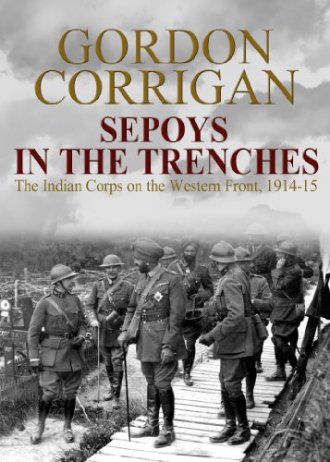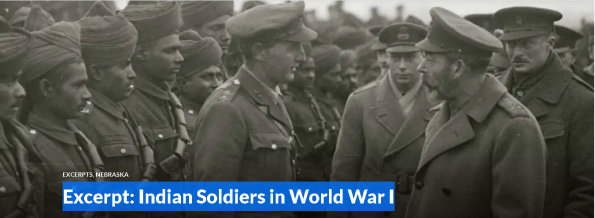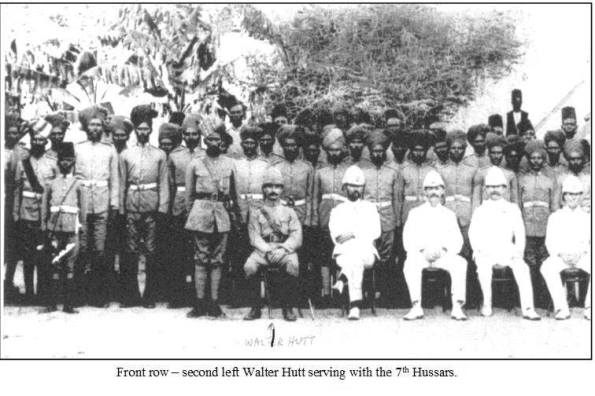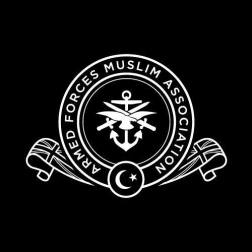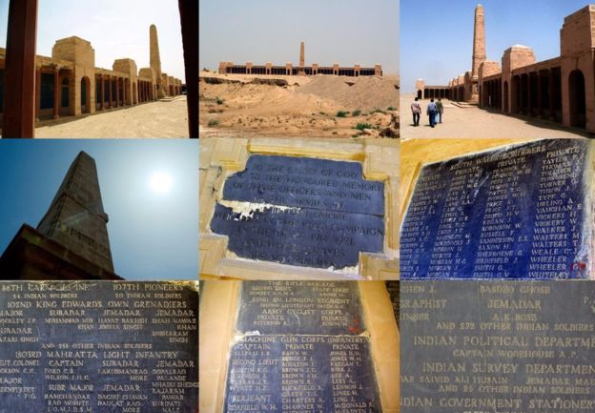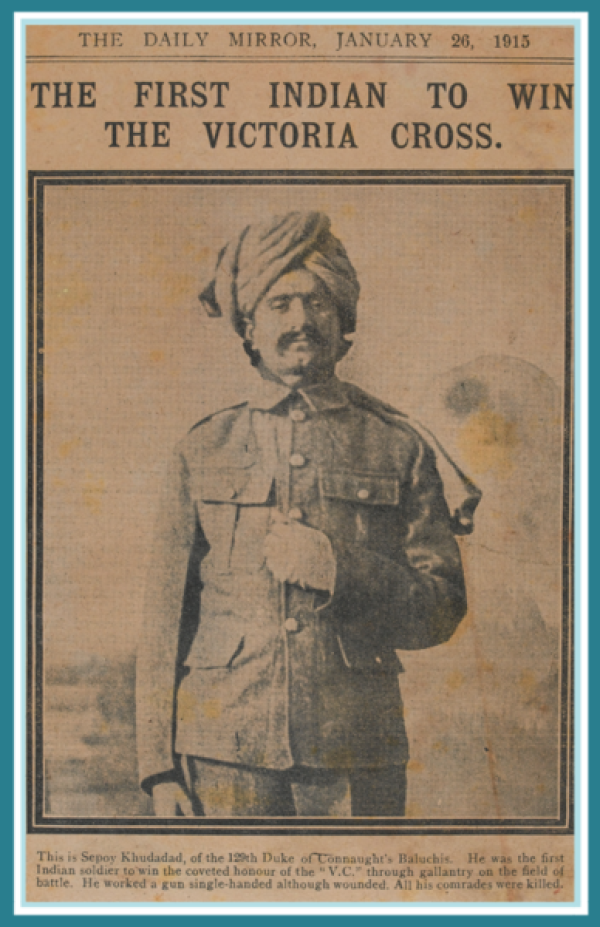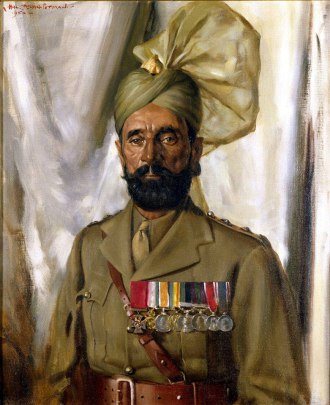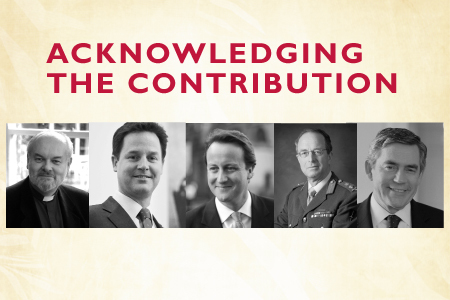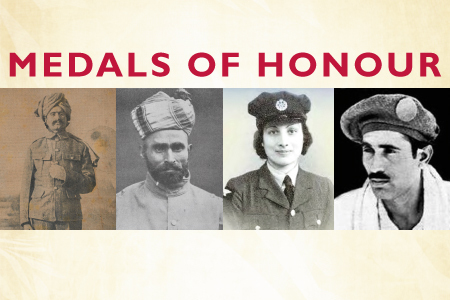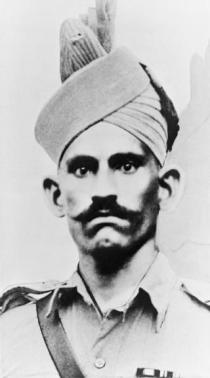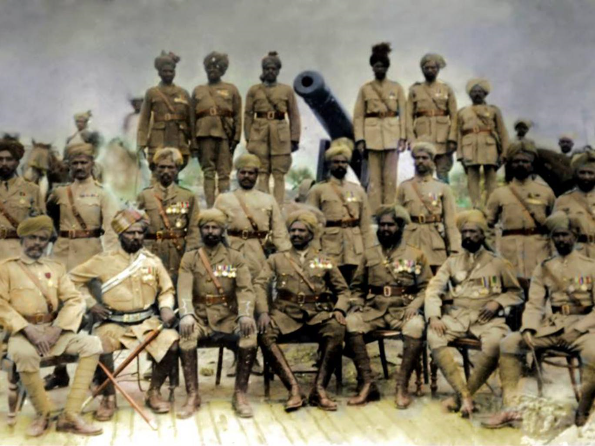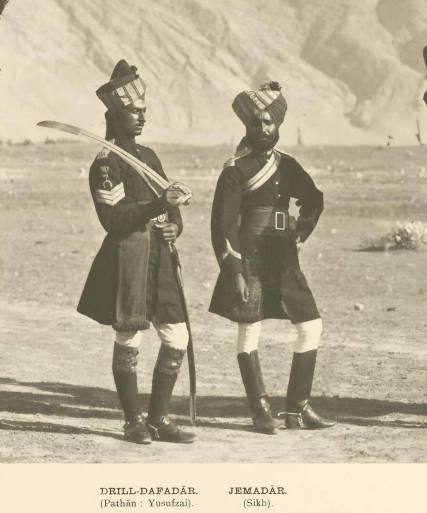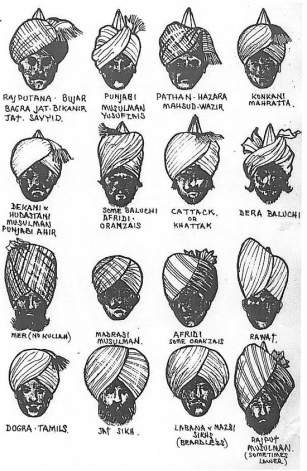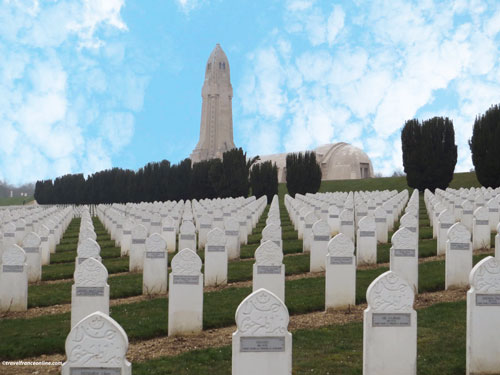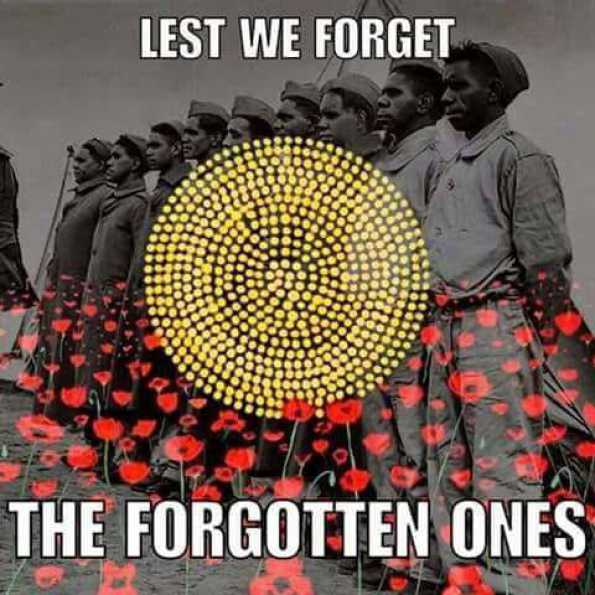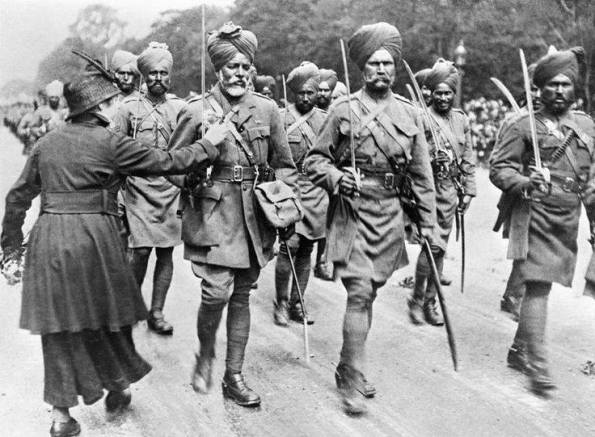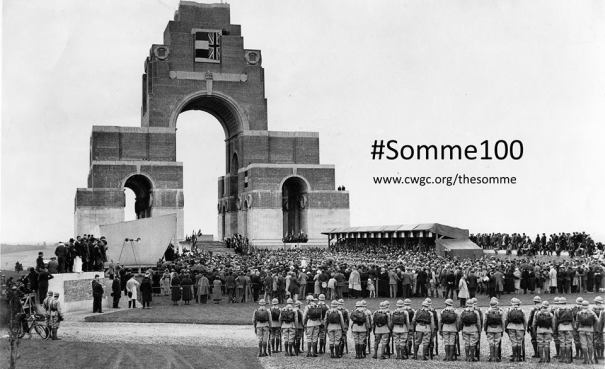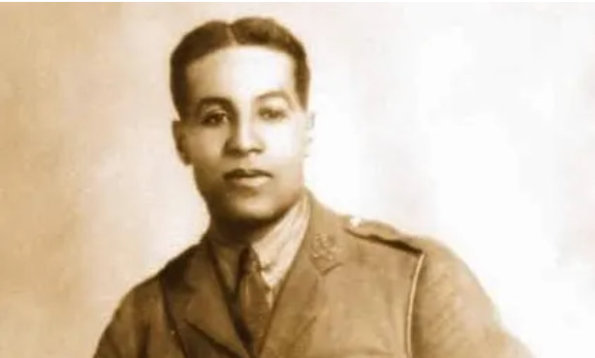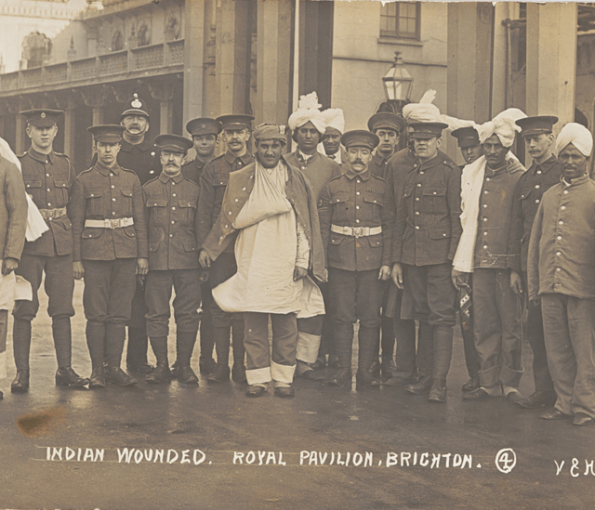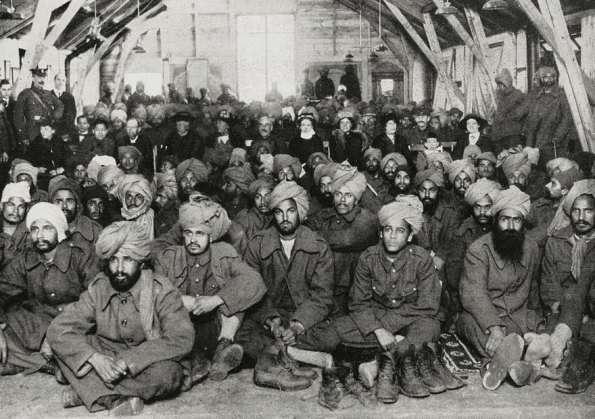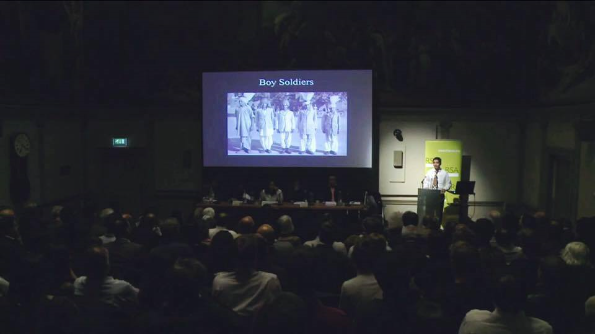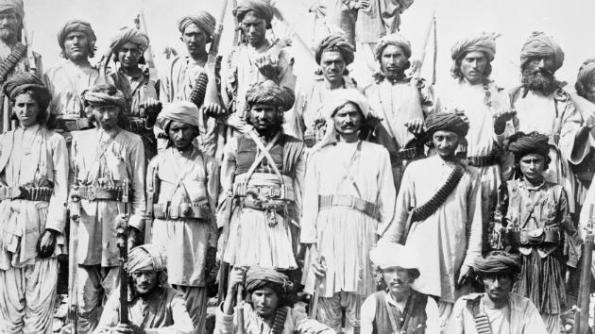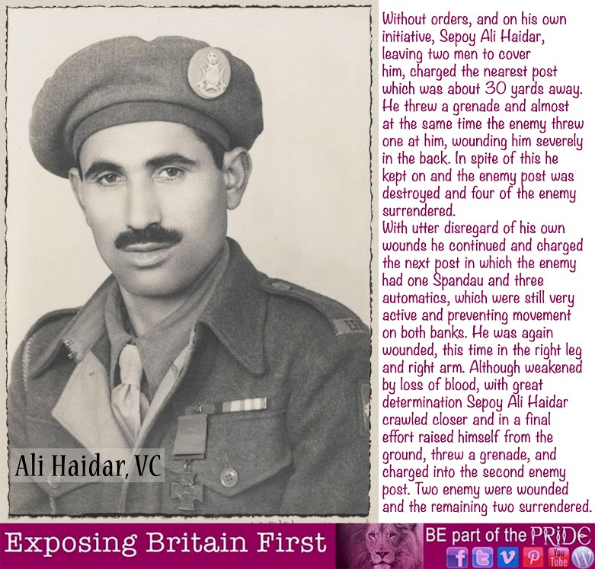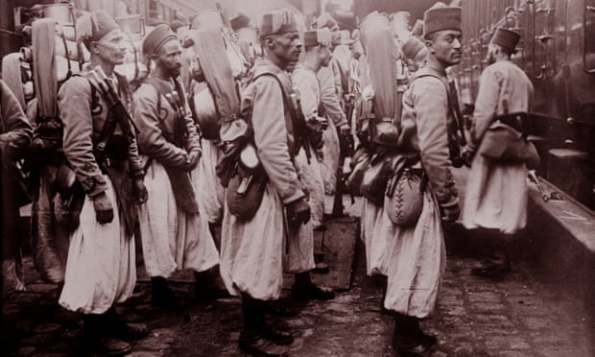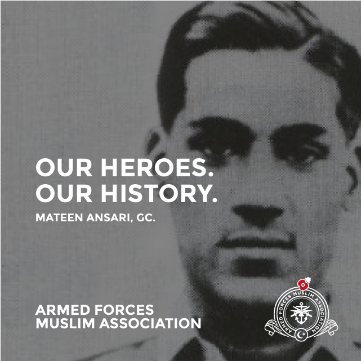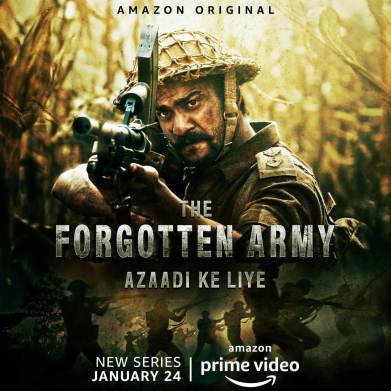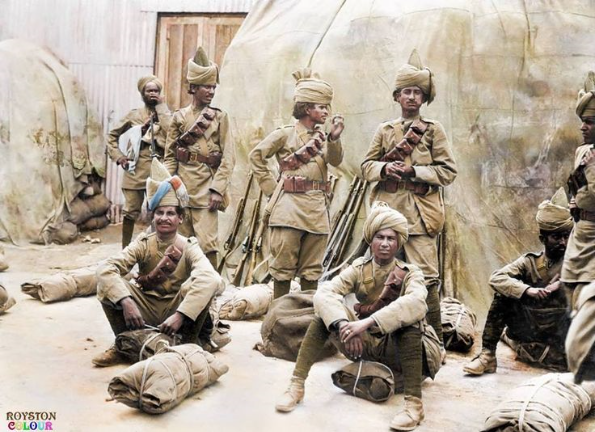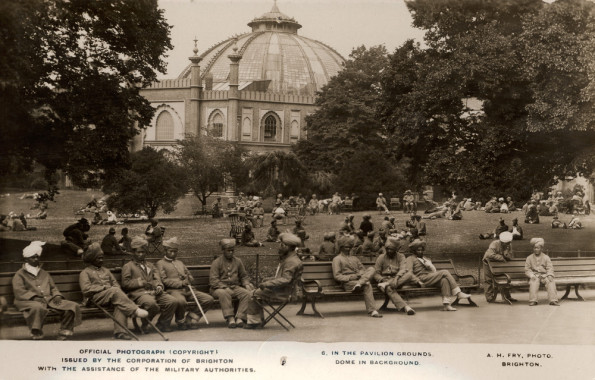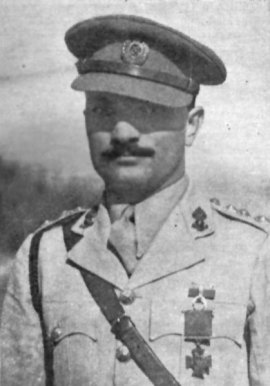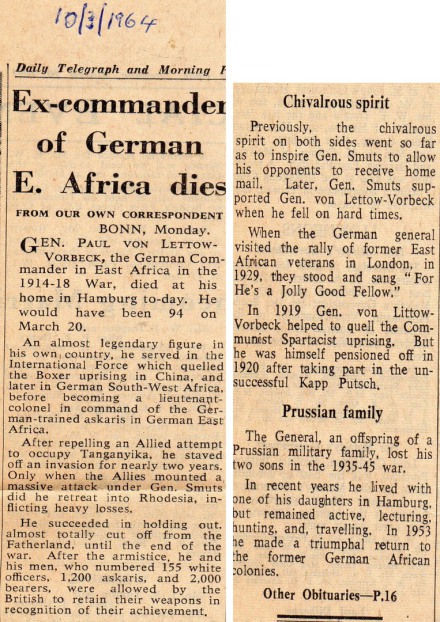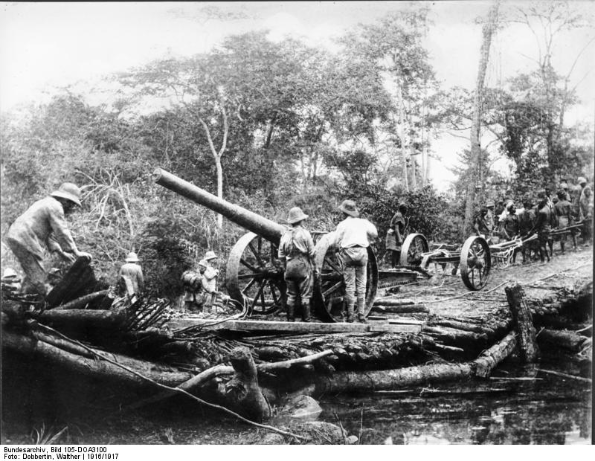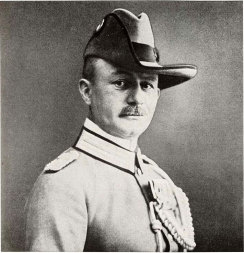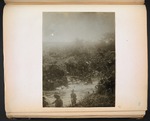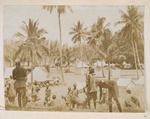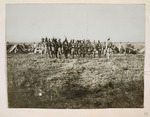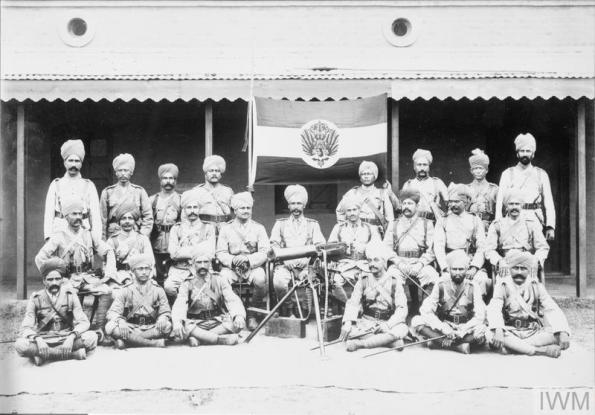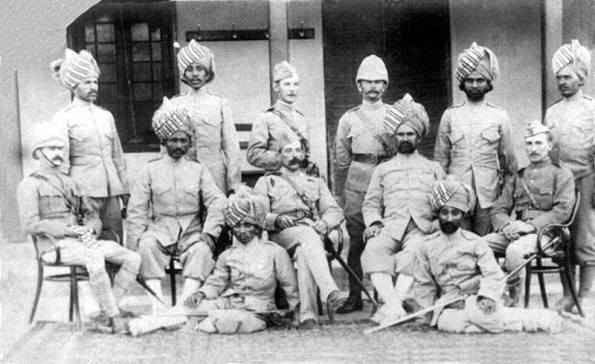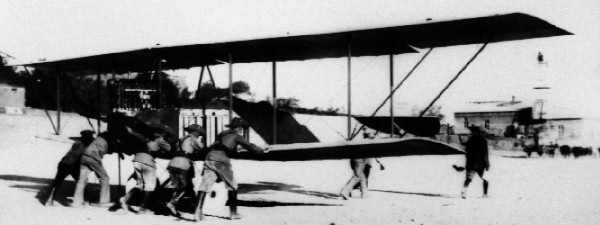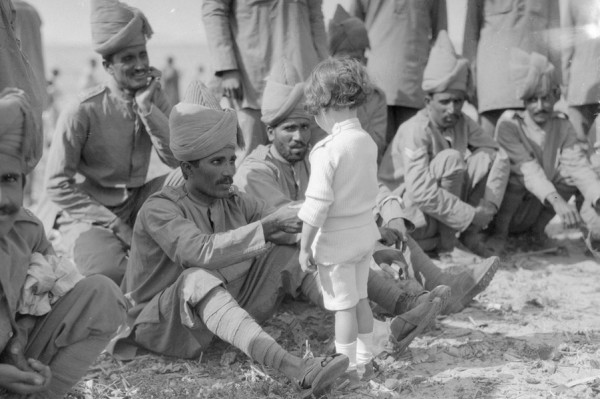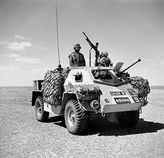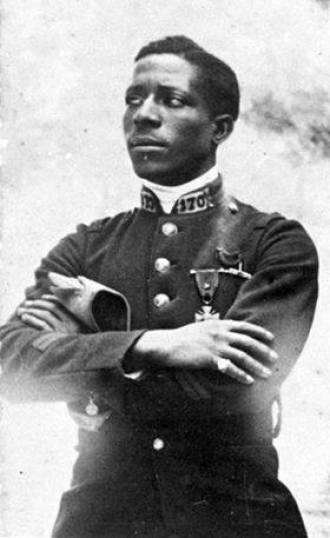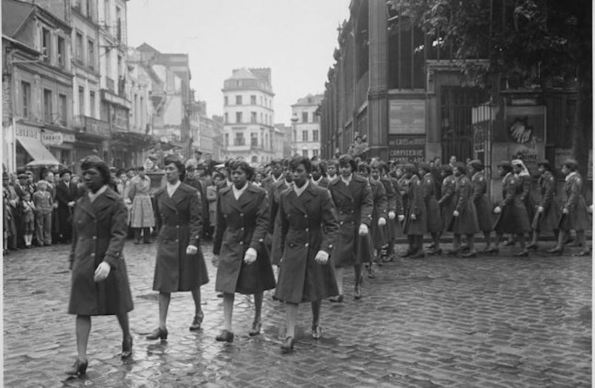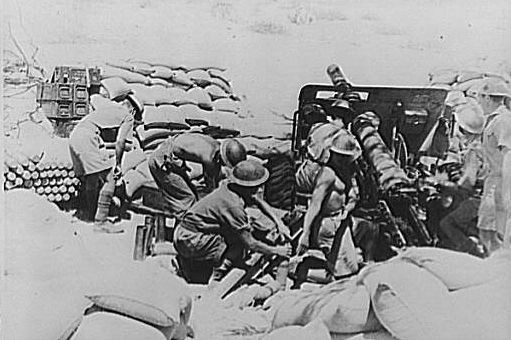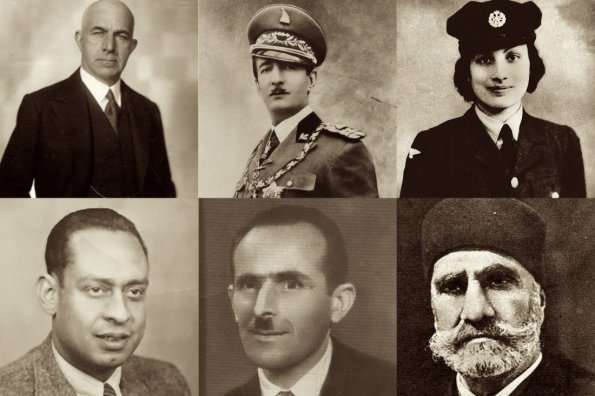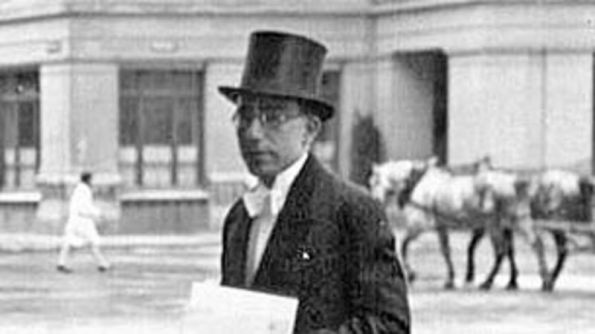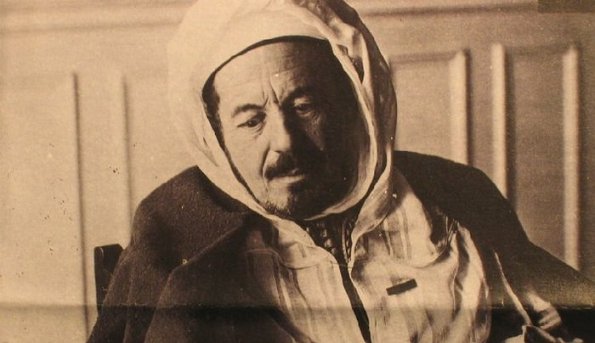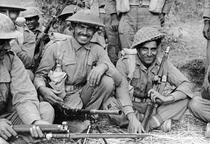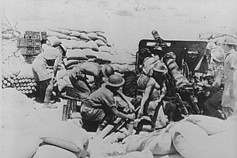According to Military historian Gordon Corrigan if the Indian army had not arrived when it did the Germans may well have broken through and they may well have got through to the channel ports, the whole history of the war may well have been very different. Some of these Indian soldiers were awarded major and with highest military decorations “the Victoria cross” awarded for valour in the face of the enemy…..
Excerpt: Indian Soldiers in World War I
https://unpblog.com/2021/07/09/excerpt-indian-soldiers-in-world-war-i/
“War means fighting, and fighting means killing.” Does war not mean remembering all equally who took part in it? Rest in Peace and respect to you all.
Imperial War Museum
Government apologises over failure to commemorate black and Asian troops
Did you know more than two million Muslims were involved in World War One?
Most people don’t which is why the Forgotten Heroes 14-19 Foundation are on a mission to raise awareness about the diversity of those who fought in the Great War.
https://www.facebook.com/Channel4News/videos/10155403987926939/
https://www.facebook.com/Channel4News/videos/muslims-of-world-war-one/10155403987926939/
Why India needs to remember 'forgotten' fallen of world wars
http://www.bbc.co.uk/news/world-asia-india-36801602?SThisFB
When you watch Dunkirk, remember that it’s a whitewashed version which ignores the bravery of black and Muslim soldiers
Even in this early stage of the Second World War, ethnic minority British citizens did show enormous courage – one of the bravest ARP men during the Blitz was black, although we have yet to see a film about him
Much has been made, inevitably in The Guardian, of Nolan’s failure to acknowledge the presence of Muslim troops at Dunkirk – Muslim Indian Commonwealth soldiers (from what is now Pakistan) and, of course, Algerian and Moroccan regiments in the French army. Atonement did contain a black British soldier in the retreat to Dunkirk although no photographs appear to exist of black UK troops in 1940 France – and Leslie Norman’s much older Dunkirk movie, which premiered two years after I first visited the beaches, contained no black soldiers – John Mills’s companions in the retreat to Dunkirk were all white – although in the film French civilians risk their lives to help save British troops. Of course, even in this early stage of the Second World War, ethnic minority British citizens did show enormous courage – one of the bravest ARP men during the Blitz was black, although we have yet to see a film about him.
The First Indian to win Victoria Cross……
http://www.iwm.org.uk/collections/item/object/205184432
Notably, here was the later recommendation for another such award, due to go to Subedan Ghulam Haidar, who commanded the 130th Baluchis, for his bravery to save General Malleson on May 5, 1915 at the expense of his own life “overlooked” and never ratified, since then a badge of shame for many on the British Armed Forces to have so blatantly shafted aside Haidar’s sacrifice, long suspected to be entirely due to his origin and nothing at all to do with his bravery.
https://www.eturbonews.com/58338/battlefield-east-africa-98-years-and-counting
https://wiki.fibis.org/w/129th_Baluchis
Medals of Honour
Muslim contribution to Britain during WW1 (1914 - 1918)
Published on 21 Jun 2016
Almost 700,000 Muslims Soldiers contributed Britain and the Allies during World War (WW 1)
1914 - 1918
From recruitment to burial, the exhibition developed by the British Muslim Heritage Centre (BMHC) gives an insight into the selfless sacrifice of Muslim soldiers, who valiantly fought for the
freedoms and privileges that we take for granted in Great Britain and Europe today.
Complete with a virtual library, lesson plans and a toolkit for schools, this exhibition is the first long-term exhibition of its kind, devoted solely to exemplifying the Muslim community’s
contribution and sacrifices during WW1.
Located in the heart of a diverse and developing Manchester, it will provide a stimulating platform from which to discuss and celebrate Muslim identity, belonging and contribution, not only to the
region, but to the United Kingdom as a whole.
400,000 Muslim Soldiers from India fought for Britain in WW1, in addition to a further 280,000 Algerians, Moroccans and Tunisians who fought for the allies. At least 89,000 Muslims were recorded as
having given their lives for this country
It is a little known fact that 20% of British Empire recruits were actually Muslims. What an unbelievable commitment and sacrifice. We British owe a lot to these forgotten heroes.
At a time when the Muslim Community is continually in the media spotlight, with some in society calling into question their loyalty to ‘British values’ and to the British way of life, this initiative
will go a long way to finding some tough but common ground.
Britain declared war on Germany on Aug 1914, first few weeks Germans advanced through Belgium and France wiping out large sections of the British army. Defences at the front became so thin that
Britain had to quickly call in reinforcements from elsewhere.
In Sept 1914 soldiers became to arrive from India (there was no partition of Pakistan or Bangladesh at that time, as it was all one). During the course of the war 1.5 million soldiers came over and
fought for Britain amongst these 1.5 million brave soldiers were over 400,000 Muslim soldiers and at least 89, 000 of these brave soldiers recorded as giving their lives for Britain. It is a little
known fact that 20% of British Empire recruits were actually Muslims. 400,000 Muslim Soldiers from India fought for Britain in WW1, in addition to a further 280,000 Algerians, Moroccans and Tunisians
who fought for the allies.
According to Military historian Gordon Corrigan if the Indian army had not arrived when it did the Germans may well have broken through and they may well have got through to the channel ports, the
whole history of the war may well have been very different. Some of these Muslim soldiers were awarded major and with highest military decorations “the Victoria cross” awarded for valour in the face
of the enemy…..
Forgotten stories of the bravery of the 1.5m Indian soldiers who fought alongside the British in WWI and the racism they faced in the trenches are revealed in newly-uncovered interviews with veterans
Unveiled: Britain's first ever memorial to the African and Caribbean soldiers who served in both World Wars.
https://www.facebook.com/bbcnews/videos/10154801722517217/?hc_ref=NEWSFEED
Political, Military and Religious leaders pay tribute to the sacrifices made by Muslims for Britain in the two world wars.
Abdul Hafiz, The Indian Muslim Recipient of the Victoria Cross, Killed Aged 18
World War I: GP plans memorial to honour nearly half a million Muslim soldiers who fought for Britain.
Forgotten role of Indian soldiers who served in First World War marked at last
'Few people are aware 1.5 million Indians fought – that there were men in turbans in the same trenches as the Tommies'
World War I: GP plans memorial to honour nearly half a million Muslim soldiers who fought for Britain
Remarkable archive shows true extent of Muslim Allied soldiers' efforts during First World War
The forgotten Muslim heroes who fought for Britain in the trenches
The stories of the 2.5 million Muslims who travelled to Europe to fight for the allies during the first world war are finally being told
Muslim contributions to the Soviet and allied victory over Nazi Germany
Turbans of the Indian Army
Throughout the Indian subcontinent for centuries the wearing of turbans has been common among Sikhs, who refer to it as a Dastar. In certain other faith communities, the headgear also served as a religious observance, including among Muslims, who regard turban-wearing as Sunnah Mu’akkadah (Confirmed Tradition).
In India the turban is referred to as a pagri, which also indicates that it is traditionally tied. There are several styles, and here is where the confusion really begins. In the Indian Army following the Indian Mutiny all Muslim and Sikh sepoys and sowars – infantry and cavalry respectively – wore a turban but the styles differed, while various Hindus also wore turbans, typically following the Muslim style.
Generally there are about 12 key variations in the type of headdress that were worn by the Indian Army during the period of the British Raj.
http://www.militarysunhelmets.com/2013/turbans-of-the-indian-army
Approximately 1.3 million Indian soldiers served in World War One, and over 74,000 of them lost their lives. World War two there were 2.5 million Indian men in August 1945 and over 87,000 Indian soldiers died. Serving in divisions of infantry, armour and a fledgling airborne force, they fought on three continents in Africa, Europe and Asia. But history has mostly forgotten these sacrifices, which were rewarded with broken promises of Indian independence from the British government, Gurkhas made approximate 15%, Sikhs who happen to make up between 16 and 20% of the British Indian Army have always worn turbans on religious grounds from day one and the rest apart from Sikhs, who made up the other 67% to 70% and within, are also seen wearing turbans on cultural grounds from day one, because their tradition demanded so, and that goes from a Muslim Balochi, Muslim/Hindu Rajput, (further to be noted amongst the Rajputs there are “Singh’s ” too), Muslim Afghans, Muslim Pathans, Kashmiris and so on …Equally all must be honoured, recognised and remembered…..
Glimpses of some of the Muslim contribution and sacrifices……
The 40th Pathans…. The 40th Pathans fought with great gallantry in the Second Battle of Ypres. The Baloch Regiment, 129th Duke of Connaught's Own Baluchis - India, France, German East Africa. 130th King George's Own Baluchis (Jacob's Rifles) - India, German East Africa, Palestine.
The ‘forgotten’ army of 400,000 Muslim soldiers who fought in Great War trenches for Britain
Approximately 1.3 million Indian soldiers served during the World War One campaign, and over 74,000 of them lost their lives. At the outbreak of war, the Indian army was 1.3 million strong, with the ranks including 100,000 Sikhs and 800,000 Hindu troops, 400,000 Muslims.
Almost 700,000 Muslims Soldiers contributed Britain and the Allies during World War (WW 1) 1914 – 1918. From recruitment to burial, the exhibition developed by the British Muslim Heritage Centre (BMHC) gives an insight into the selfless sacrifice of Muslim soldiers, who valiantly fought for the freedoms and privileges that we take for granted in Great Britain and Europe today.
400,000 Muslim Soldiers from India fought for Britain in WW1, in addition to a further 280,000 Algerians, Moroccans and Tunisians who fought for the allies. At least 89,000 Muslims were recorded as having given their lives and thousands more injured for this country.
Those stats that are illustrated on the topic discussed clearly depict “Total Civilian and Military deaths”. Further, you mentioned “Victoria Cross recipients” The Victoria Cross (VC) was awarded 628 times to 627 recipients for action in the First World War (1914–1918). The late Subadar Khudadad Khan of the 129th Duke of Connaught’s Own Baluchis, was the
first Indian soldier to receive the VC.
The brave rest are listed as per
link below https://en.wikipedia.org/wiki/List_of_First_World_War_Victoria_Cross_recipients.
Muslims Contribution to the World Wars
http://www.mcb.org.uk/british-muslims/
http://www.libertygb.org.uk/news/did-muslims-fight-britain-both-world-wars
http://www.middleeasteye.net/news/muslim-soldiers-world-war-i-allies-533439783
http://ww1muslimsoldiers.org.uk
http://www.huffingtonpost.com/azeem-ibrahim/how-muslims-won-the-secon_b_5202541.html
https://www.google.co.uk/search?
client=opera&q=Muslims+contribution+to+United+Kingdom+in+wars.&sourceid=opera&ie=UTF-8&oe=UTF-8
I AM BRITISH. I AM MUSLIM. I AM A SOLDIER.
https://www.facebook.com/ArmedForcesMuslimAssociation/
Muslim Stats
http://www.open.ac.uk/ccig/blogs/british-muslim-soldiers
592 Muslim Graves at Douaumont near Sommes
The forgotten Muslim heroes of WWI
How Muslim soldiers helped save the allies from defeat in the First World War
The History Troupe
10 March 2015
Indian Sepoys and the First World War
Today, March 10th, marks the centenary of the involvement of Indian soldiers fighting alongside the British Army at the Battle of Neuve Chappelle near Lille in France.
Indian troops arrived in France in September 1914 and over 1 million featured in battles across the Western Front and from German East Africa and Mesopotamia to the guarding of the North West Frontier. Sixty thousand were killed and the same number were wounded.
When they arrived in France to a thoroughly alien country they described the houses as “samples of paradise” and, as the battles raged another described feeling “as tired bullocks aching to lie down after the monsoon.”
“Do not think of this as war” wrote another sepoy from a hospital in England in 1915,”This is not war. It is the ending of the world.” In fact, censors were wary of the letters home and one officer remarked that whilst many were determined to fight just like the martial race they came from they also showed a tendency “to break into poetry – a rather ominous sign of mental disquietude.”
These were brave men far from home. For many of us, the War Poets mean the likes of Brooke, Sassoon, Owen and others. Anthologies rarely explore the war poetry from across the globe. In commemoration of the Indians and others from around the world who lost their lives in this Colonial War here is a poem written by a Mother:
The Gift of India by Sarojini Naidu
Is there ought you need that my hands withhold,
Rich gifts of raiment or grain or gold?
Lo! I have flung to the East and the West
Priceless treasures torn from my breast,
And yielded the sons of my stricken womb
To the drum-beats of the duty, the sabers of doom.
Gathered like pearls in their alien graves
Silent they sleep by the Persian waves,
Scattered like shells on Egyptian sands,
They lie with pale brows and brave, broken hands,
they are strewn like blossoms mown down by chance
On the blood-brown meadows of Flanders and France
Can ye measure the grief of the tears I weep
Or compass the woe of the watch I keep?
Or the pride that thrills thro' my heart's despair
And the hope that comforts the anguish of prayer?
And the far sad glorious vision I see
Of the torn red banners of victory?
when the terror and the tumult of hate shall cease
And life be refashioned on anvils of peace,
And your love shall offer memorial thanks
To the comrades who fought on the dauntless ranks,
And you honour the deeds of the dauntless ones,
Remember the blood of my martyred sons!
Sarojini Naidu was a major figure in Indian politics - a founder member of the Indian Congress and close friend of Annie Besant - that heroine of the London Dockers Strike in the 1880s and the first President of the Indian Congress Party as well. Formidable women agitating for social justice and here, reflecting on a loss that for too many is unknown or forgotten. The First World War was a global conflict and we should pause to remember those from all corners of the world; of all creeds and ethnicity on days like today. The last line of a poem has it: no colour on a bone when dead.
Commonwealth War Graves Commission
Click above
Commonwealth War Graves Commission …
Below…Facebook link
https://www.facebook.com/commonwealthwargravescommission/
www.cwgc.org
Tanga New Memorial Built
A new war memorial commemorating almost 400 Indian and British soldiers who died during the First World War in Tanzania has been completed by a team of craftsmen from the Commonwealth War Graves Commission (CWGC) in time for Remembrance Day.
-----------------------------------------------------------------------------------------------
Historian finds clues to grave of Britain’s first black army officer
Body of footballer Walter Tull believed lost after he died in the first world war
https://www.theguardian.com/world/2020/nov/07/historian-finds-clues-to-grave-of-britains-first-black-army-officer?utm_source=pocket-newtab-global-en-GB
The following information is for teachers to utilise in planning classroom activities.
When war was declared in 1914, Britain relied heavily on soldiers from the empire. Men from around the world would arrive in East Sussex to fight for Britain.
At the outbreak of the First World War, the Indian Army numbered 240,000 men; by 1918 it had grown to nearly 550,000. Most recruits came from the north of India, especially the Punjab. The Indian army at the time was made up of numerous religions. Battalions of Punjabi Muslims served in Mesopotamia and, after the war, the 92nd Battalion were made ‘Prince of Wales’s Own‘ in recognition of their bravery and gallantry. Sikhs made up 20% of the British Indian Army at the outbreak of the war. By its conclusion around 130,000 Sikh soldiers had served.
Indian soldiers served on many battlefields over the course of the war but many of the troops were unfamiliar with their equipment, having only been assigned their rifles and kit upon arriving in France. Their lack of warm clothing during the cold weather soon saw morale plummet and desertion was not uncommon. In October 1915, the infantry divisions were withdrawn to Egypt whilst the cavalry remained in France.
Nearly 700,000 Indian soldiers served in Mesopotamia (modern day Iraq) fighting against the Ottoman Empire. Indian soldiers also fought the Germans in East Africa and defended the Suez Canal. Three battalions of Gurkhas and one of Sikhs participated in the Gallipoli campaign. The Sikh Battalion was almost wiped out in the Battle of Krithia.
http://www.eastsussexww1.org.uk/indian-soldiers-east-sussex-2/
How was India involved in the First World War?
http://www.britishcouncil.org/voices-magazine/how-was-india-involved-first-world-war
Approximately 1.3 million Indian soldiers served in World War One, and over 74,000 of them lost their lives. But history has mostly forgotten these
sacrifices, which were rewarded with broken promises of Indian independence from the British government, writes Shashi Tharoor.
https://www.bbc.co.uk/news/magazine-33317368
WW1 campaign in Africa enlisted the Punjabis (Sikh and Muslims), The Rajput, The KAR, Africans, The South African Coloureds, The Boers, The British, The Ethiopians, The Sudanese, Nubians, The Somali, The West Indians and many more. May all rest in peace!
Soldiers of the British Empire - Pakistan
http://historum.com/war-military-history/84962-soldiers-british-empire-pakistan.html
It is obvious that some people are suffering from amnesia or are pretending to be
naïve over why there is hardly any coverage or lack of it, whatever the case may be during both WW1 and WW2 campaigns on the contributions carried out by African and Asian soldiers who took part
during the WW1 and WW2 campaigns, which were either fought in their own back yard or had to serve abroad under and for the total benefits of their Colonial masters. In East Africa, our relatives were
forced into joining the British Army and for that matter anyone else seen fit enough to join the campaign were dragged into it. Britain, altogether, mobilized about 1.5 million Indian soldiers during
the war, of which about 90,000 were killed, 76,000 wounded, 100,000 carriers just alone, had died mostly of African back ground, no idea how many actually died/wounded in total. Some 150,000 Indian
soldiers were deployed in Europe from September 1914 on. The overwhelming majority of Indian troops, however, fought in Mesopotamia against the Ottoman Empire. African troops fought as far as
Asia.
Swedish author Jean Guillou wrote “where the lack of humanity and lack of treatment of own soldiers, wounded /sick soldiers were treated like
cannon-fodder”. All those wounded and others soldiers who had served for the British were left abandoned and hardly remembered worldwide and still remains the case to this very day. Best of all, to
them our forefathers were either second or third class citizens in their eyes.
My late great uncles told me, they were forced into fighting for the British, in fact they used to come door to door and grab anyone who seemed old enough. Can you imagine there were thousands of Indian soldiers killed as well as Africans in Tanga during the WW1 campaign against the Germans and their loved ones were never informed of their whereabouts for months only to be told months later that they were killed in Combat! To this very day, there has never been any memorial held nor soldiers killed ever mentioned or names held anywhere in memory. The injured Indian and African soldiers were discarded like fodder their families too..
Jonathan Kruger I look after some of our Zambian World War 2 veterans of the Northern Rhodesia Regiment and Kings African Rifles. Most of them are in their 90s now living extreme poverty in their old age. Some were volunteers that joined while others told me they were taken by the British officers from their class rooms at school and from the markets. Didn’t even give them time to say good bye to families. Then sent off to train and prepare to fight in Ethiopia Madagascar Burma They later fought in Malaya in the 1950s against the Chinese Communist. It’s awesome to see all their medals they got from around the world. Some them still have their British uniforms.
Muslim Boy Soldiers (World War)
Muslim Boy Soldiers (World War)
The slide I am discussing in this talk is the unknown story of Muslim Boy Soldiers, some of whom were 13/14 years old when they enlisted and some were forcibly conscripted into the British Indian
Army. A large number of them died facing the German army and Imperial Japanese troops during the Second World War.
400,000 Muslim Soldiers fought for Great Britain in the First World War
How was India involved in the First World War?
'Almost 1.5 million Muslim, Sikh and Hindu men volunteered in the Indian Expeditionary Force.' Photo of members of a Waziri Khasadar, India, 1917-19 ©
Imperial War Museum.
https://www.britishcouncil.org/voices-magazine/how-was-india-involved-first-world-war
More than 400,000 Muslim soldiers fought in World War One ,
THEY are the forgotten heroes of the trenches, the brave men who gave their lives to the Empire but whose names have been erased from the history books.
More than 400,000 Muslim soldiers fought in World War One , yet a recent survey by British Future, a think-tank dedicated to racial integration, has revealed that only 22 per cent of people know of their sacrifice.
http://www.birminghammail.co.uk/news/midlands-news/forgotten-army-400000-muslim-soldiers-10325190
Forgotten role of Indian soldiers who served in First World War marked at last
The 'forgotten' army of 400,000 Muslim soldiers who fought in Great War trenches for
Britain
http://www.birminghammail.co.uk/news/midlands-news/forgotten-army-400000-muslim-soldiers-10325190
The World War’s, The Forgotten Soldiers of the Empire
Map: The troops from around the world that served Britain in WWI
The forgotten Muslim heroes who fought for Britain in the trenches
The stories of the 2.5 million Muslims who travelled to Europe to fight for the allies during the first world war are finally being told
The Forgotten Army- Azaadi Ke Liye.
Amazon Prime Video announced the trailer launch of its first Indian Original releasing in 2020 – the highly anticipated Amazon Original Series The Forgotten Army- Azaadi Ke Liye. Created and Directed by the national award winning filmmaker, Kabir Khan, the war epic is based on true events and narrates the journey of the extraordinary young brave men and women who formed a part of the Indian National Army (INA) and fought against the British for India’s Independence. The series marks the digital debut of Sunny Kaushal and the acting debut of Sharvari in lead roles, alongside Rohit Choudhary, Karanvir Malhotra, M.K Raina, TJ Bhanu and Shruti Seth. The Forgotten Army- Azaadi Ke Liye is set to release across 200 countries and territories on January 24, 2020, exclusively on Amazon Prime Video.
Forgotten role of Indian soldiers who served in First World War marked at last
World War One Black and White photos that are researched and colourised in detail by Doug and other artists from the 'Colourisehistory Group'
https://www.facebook.com/WW1-Colourised-Photos-450822585061599/?fref=nf
The Royal Pavilion
The Royal Pavilion was the first Indian hospital to open in Brighton. The former palace, along with the Dome and Corn Exchange, were converted into a state of the art medical facility in less than two weeks. New plumbing and toilet facilities were established, and 600 beds were set up in new wards. X-ray equipment was installed, and the Great Kitchen became one of two operating theatres. The Pavilion’s first patients arrived in early December 1914. Over the following year, over 2,300 Indian patients were treated.
http://brightonmuseums.org.uk/royalpavilion/history/ww1-and-the-royal-pavilion/
WW1 campaign in Africa enlisted the Punjabis (Sikh and Muslims), The Rajput, The KAR, Africans, The South African Coloureds, The Boers, The British, The Ethiopians, The Sudanese, Nubians, The Somali, The West Indians and many more. May all rest in peace! rs came from the ian Subcontinent which Includes Modern Day India, Pakistan & Bangladesh.
----------------------------------------------------
World Wars
Asian contributions to both world wars are not widely known about, despite the fact that India raised the world’s largest volunteer armies: 1.5 million in WWI and 2.5 million in WWII. World War I marked an important watershed.
http://www.bl.uk/learning/histcitizen/asians/worldwars/theworldwars.html
Indian Army during World War I
The Indian Army during World War I contributed a number of divisions and independent brigades to the European, Mediterranean and the Middle East theatres of war in World War I. One million Indian troops would serve overseas, of whom 62,000 died and another 67,000 were wounded. In total 74,187 Indian soldiers died during the war.
http://en.wikipedia.org/wiki/Indian_Army_during_World_War_I
Istanbul and Indian Soldiers of the First World War - See more at:
http://amitavghosh.com/blog/?p=3752
India and World War One
India played a significant part in World War One. However, India’s part in the war is frequently overlooked as a result of the horrors experienced in trench warfare and by Europe’s tendency to home in on battles such as those fought at the Somme and Verdun, which many assume only Europeans fought in.
http://www.historylearningsite.co.uk/india_and_world_war_one.htm
India and the Western Front
By Dr David Omissi
The Indian Corps in France
In August 1914, as the German Army advanced through France and Belgium, more Allied troops were desperately needed for the Western Front.
http://www.bbc.co.uk/history/worldwars/wwone/india_wwone_01.shtml
World War I: UK announces search for families of 74,000 Indian soldiers who died fighting
http://www.blackpresence.co.uk/category/black-history/black-soldiers-black-history/
http://www.historylearningsite.co.uk/india_and_world_war_one.htm
Books:
Indian Voices of the Great War: Soldiers' Letters, 1914-1918: Soldiers' Letters, 1914-18 [Paperback]
The Indian Corps in France: During the First World War [Hardcover]
During World War I (1914–18), more than 200,000 Gurkhas served in the British Army, suffering approximately 20,000 casualties, and receiving almost 2,000 gallantry awards
https://en.wikipedia.org/wiki/Gurkha
WW1
http://en.wikipedia.org/wiki/BL_5.4-inch_howitzer
http://www.bbc.co.uk/news/uk-28519247
World War one photos
The 129th Duke of Connaught's Own Baluchis was an infantry regiment of the British Indian Army raised in 1846 as the 2nd Bellochee Battalion. It was designated as the 129th Duke of Connaught's Own Baluchis in 1903, and became 4th Battalion (Duke of Connaught's Own) 10th Baluch Regiment in 1922. In 1947, it was allocated to Pakistan Army, where it continues to exist as 11th Battalion of The Baloch Regiment.[1]
http://en.wikipedia.org/wiki/129th_Duke_of_Connaught%27s_Own_Baluchis
http://www.balochonline.com/en/129th-duke-of-connaughts-own-baluchis.html
THE GERMAN EAST AFRICA CAMPAIGN - 1914-1918
http://samilitaryhistory.org/vol066ed.html
“The Bridge Builders” Jean Guillou
Interesting and surprising! Brought to my attention by the book "The Bridgebuilders" by Swedish author Jean Guillou where the lack of humanity and lack of treatment of wounded and/or sick African soldiers, "cannon-fodder", by the British Forces is shocking cruel.
http://salomonssonagency.se/php/book.php?lang=en&bookid=208
Carrier Corps
The British Administration formed a military labour organisation, the Carrier Corps, which ultimately recruited or conscripted over 400,000 African men for porterage and other support tasks.
https://en.wikipedia.org/wiki/Carrier_Corps
The African soldiers dragged into Europe's war
More than one million people died in East Africa during World War One. Some soldiers were forced to fight members of their own families on the battlefield because of the way borders were drawn up by European colonial powers, writes Oswald Masebo.
http://www.bbc.co.uk/news/magazine-33329661
Kenya’s Nubians
http://nubiansinkenya.photoshelter.com/
http://www.youtube.com/watch?v=h2W8MC55XDk&feature=youtu.be
Interesting articles on WW I in other parts of the world including two about Africa.
If you click on I Wonder under each story, there are further articles to be read.
http://www.bbc.co.uk/news/magazine-30098000
Tanzania: Race and Colonial War
More than one million people died in East Africa during WW1, as the British and German Empires battled each other away from the muddy fields of Europe. The war is all but forgotten in Tanzania,
http://www.bbc.co.uk/programmes/p02ngjv6?ocid=socialflow_facebook
GENERAL PAUL VON LETTOW VORBECK’S EAST AFRICA CAMPAIGN:
Paul von Lettow-Vorbeck I WHO DID WHAT IN WW1?
The First World War had a terrible impact both on the local communities, and on the men from India and South Africa in particular who fought in what was then German East Africa with disease taking as heavy a toll as the hostilities.
For Colonel Paul von Lettow-Vorbeck, a veteran of the Boxer Rebellion and the Herero genocide who leads a German force consisting mostly of native African troops, the victory is an
important vindication.
Although it is said that he had spent the pre-war months touring the territory first-hand to plan a potential guerrilla campaign in the event of conflict, and with the outbreak of hostilities
Lettow-Vorbeck has been a stalwart advocate of resistance, that was not totally true as there was an agreement that guaranteed the neutrality of Tanga that was probably made during the 'Heligoland
Treaty', that carved out the East African Coastal, BEA and GEA demarcations lines that were historically drawn up, the British gave the Germans 24-hours’ notice that the agreement was now
cancelled.
He will bless his luck today for having an idiot for an opponent that had brought in ill-trained British Indian Soldiers resulting in about 400 Indians and British that were killed in the Tanga battle alone.
There were many African porters, carriers that took part, as well as in assisting with, Ambulances supply lorry, stretcher bearers, cooks, mule transportation of various goods including arms, bridge building..etc, Kings African Rifles was active too with Indian troops in the East African campaign.
“The Bridge Builders” Jean Guillou
Interesting and surprising! Brought to my attention by the book "The Bridge builders" by Swedish author Jean Guillou narrated “where the lack of humanity and lack of treatment of wounded and/or sick African soldiers” as, "cannon-fodder", by the British Forces is shocking cruel.
Indians and Africans killed in total numbers came to 42,604 and approximate, wounded missing 44,572 accordingly to official figures in the East African Campaign alone.
100,000 carriers just alone, had died mostly of African back ground during WW1 campaign, no idea how many actually died/wounded in total, sadly no proper records are available.
Dr Norman Parson Jewell (On Call in Africa)…
African Contingents in the French Army
Between 1914 and 1918, the French deployed approximately 450,000 indigenous troops from Africa, including West Africans (so-called Tirailleurs Sénégalais), Algerians (so-called Turcos and Spahis), Tunisians, Moroccans, Malagasies, and Somalis, most of whom saw deployment in Europe. Settlers of European origin provided another 110,000 soldiers from North Africa (Chasseurs d’Afrique and Zouaves) and some of the 5,700 men in “créole” units from the old Senegalese cities and ports were also of European extraction. On the other hand, a suggestion made by Prime Minister Georges Clemenceau (1841–1929) in 1918 to hire up to 200,000 Ethiopian mercenaries never materialised.[2] Immediately after World War I French African troops would serve as occupation forces in the German Rhineland (1919 to 1930)[3] as well as in South Eastern Hungary (1919 to 1929)[4] and formed part of the Allied intervention in the Russian civil war (1918 to 1920).[5] ………….
According to Military historian Gordon Corrigan if the Indian army had not arrived when it did the Germans may well have broken through and they may well have got through to the channel ports, the whole history of the war may well have been very different. Some of these Indian soldiers were awarded major and with highest military decorations “the Victoria cross” awarded for valour in the face of the enemy…..
African Contingents in the French Army
Between 1914 and 1918, the French deployed approximately 450,000 indigenous troops from Africa, including West Africans (so-called Tirailleurs Sénégalais), Algerians (so-called Turcos and Spahis), Tunisians, Moroccans, Malagasies, and Somalis, most of whom saw deployment in Europe. Settlers of European origin provided another 110,000 soldiers from North Africa (Chasseurs d’Afrique and Zouaves) and some of the 5,700 men in “créole” units from the old Senegalese cities and ports were also of European extraction. On the other hand, a suggestion made by Prime Minister Georges Clemenceau (1841–1929) in 1918 to hire up to 200,000 Ethiopian mercenaries never materialised.[2] Immediately after World War I French African troops would serve as occupation forces in the German Rhineland (1919 to 1930)[3] as well as in South Eastern Hungary (1919 to 1929)[4] and formed part of the Allied intervention in the Russian civil war (1918 to 1920).[5] ………….
Africans in Other European Armies
Unlike the French, the British were reluctant to deploy African troops in Europe. It is true that the British forces in the African and Middle Eastern campaigns included large numbers of African soldiers, and parts of the Indian Colonial Army were used in Europe from as early as autumn 1914 on. From 1916 on a campaign for a “million black army” following the French example was backed by several officers and politicians with colonial backgrounds, including Winston Churchill (1874–1965). But logistical issues, coupled with racist prejudices and opposition from colonial authorities in Africa, resulted in a renunciation of using such troops on European battlefields.[12] Non-white men were also banned from the “South African Overseas Expeditionary Force” that sent about 30,000 soldiers to France. Black and “coloured” men from the Union of South Africa served in Europe in the “South African Native Labour Contingent” (21,000 men), the “Cape Auxiliary Horse Transport” (2,800 men) and the “Cape Coloured Labour Corps” (1,200 men), all of them in unarmed ancillary roles.[13] However, a number of blacks resident in the United Kingdom managed to enlist in metropolitan British forces and some of them were even promoted to officer ranks.
http://encyclopedia.1914-1918-online.net/article/colonial_military_participation_in_europe_africa
New WWI memorial to Indians who died at Tanga battle
https://timesofindia.indiatimes.com/india/new-wwi-memorial-to-indians-who-died-at-tanga-battle/articleshow/55403798.cms
05 November 1914 – Battle Of The Bees
https://ww1blog.osborneink.com/?p=2819
-----------------------------------------------------------------------------------------------------
Kohima: Britain's 'forgotten' battle that changed the course of WWII
https://www.bbc.co.uk/news/world-asia-india-55625447
--------------------------------------------------------------------------------------------------------------------------------
British East Africa Protectorate
During the First World War from 1914 to 1918, the British used over 50,000 African troops and over one million African followers.
Approximately 24,000 Kenyans were killed fighting for the British in World War 1. In “Kenya: From Colonization to Independence, 1888-1970”, R. Mugo Gatheru
gives the number as 23,869. Of the approximately 163,000 Africans who served in the Carrier Corps, about 124,000 were said to have died of influenza.
In the course of the First World War 42,318 East African porters known as carrier corps died from diseases in that war, while 4,300 died in actual combat.
Soldiers on the British government front in the World War 1 were drawn from the King’s African Rifles (KAR), a multi-battalion British colonial regiment raised
from British possessions in East Africa (Uganda, Kenya, Tanganyika, Zanzibar) from 1902 to the 1960s. Soldiers (other ranks) of the KAR were recruited from Somaliland, British East Africa, Uganda,
Nyasaland, and following its transfer after World War 1 Tanganyika (previously German East Africa).
In 1914, KAR comprised of 70 British officers, 3 British non-commissioned officers (NCOs), and 2,325 Africans. By the end of World War 1 the KAR consisted of 22 battalions, 1,193 British officers, 1,497 British NCOs and 30,658 Africans.
Carrier Corps
In 1914 no carrier organisation existed, so one had to be rapidly improvised. The Carrier Corps was a military organisation created in Kenya in World War 1 to provide military labour to support the
British campaign against the German Military forces in East Africa, commanded by Paul von Lettow-Vorbeck. It was a military labour organisation which ultimately recruited or conscripted over 400,000
African men for porterage (on foot) and other support tasks.
While soldiers carried guns, Carrier Corps carried the things that soldiers needed to survive and fight – food, ammunition, medical supplies and equipment. There were three main carrier forces, based on the East Africa Protectorate, on Uganda and on Nyasaland and Northern Rhodesia.
The Native Followers Recruitment Ordinance (1915), was introduced as a wartime contingency to secure adequate labour for the Carrier Corps. It called for the compulsory conscription of 3,000 labourers per month. Only those already employed by Europeans were exempt from recruitment.
Despite much improved rations and medical services, deaths among followers averaged 10%; over 100,000 must have died from disease or were killed in the field.
Settlement quarters such as ‘Kariokor’ in Nairobi and ‘Kariokoo’ in Dar es Salaam and Dodoma are named after the carrier corps presumably because members of the corps were given housing in this places.
The Indian community was racially segregated in the East Africa protectorate, with restrictions imposed on them with regard to commercial and residential
occupation in the towns and Indian immigration. Despite the segregation and restrictions imposed on Indians their numbers rapidly grew to outnumber the Europeans by more than 2:1 by
1919.
The East Africa protectorate remained a British protectorate until July 23, 1920 when it, except the original coastal strip, became a Crown colony. The
original coastal strip remained a protectorate.
http://www.enzimuseum.org/after-the-stone-age/british-east-africa-protectorate
The British (many from, KAR, the Indian Army, the South Africans) approached from Northern to down South, the Belgians (many from the Congo) from the West travelling Easterly direction, the Portuguese (many from Mozambique) travelling North Westerly direction, they were all offensively trailing the German’s in Von Lettow-Vorbeck all the way to the present day Zambian (Northern Rhodesia) and Tanzania (Tanganyika) border literally zig zagging all the way down to the Southern borders of Tanganyika and in the process defending in guerrilla style war fare all the way down, therefore to be fair to Von Lettow-Vorbeck for him to known what is happening in the rest of the theatre of war, would have been literary impossible. General von Lettow-Vorbeck was never defeated in battle, and only surrendered after learning about the Armistice in November 1918. The British repatriated the white German soldiers but confined the Askaris in squalid camps. General von Lettow-Vorbeck refused to leave until he had won promises of decent treatment and early release for his black troops.
Returning to Germany as a national hero, von Lettow-Vorbeck became active in politics and tried to establish a conservative opposition to the Nazis. He was able to bring some of his black officers with him to serve in the German Freikorps. When Hitler offered him the ambassadorship to the Court of St. James’s in 1935, he “told Hitler to go fuck himself.” Although repeatedly harassed by the Nazis, he survived their regime due to his popularity as a genuine hero of the old school.
The old general never forgot his Askaris, and he returned to East Africa in 1953 where he was tearfully welcomed by his surviving soldiers. Upon returning to Europe, he campaigned to provide for their welfare. When von Lettow-Vorbeck died at the age of 93 in 1964, the West German government and the Bundeswehr flew in two former Askaris as state guests so that they could attend the funeral of “their” general. A few months later, the old warrior’s fondest wish became reality when the West German Bundestag voted to deliver back pay to the 350 surviving Askaris in Africa.
A fitting way to say “f*ck you” to Hitler and Germany’s racist past.
http://timashby.com/the-german-general-who-told-hitler-to-go-screw-himself/
The decision to turn East Africa into a warzone was taken by the colonisers. The main burden of fighting the war was carried by the colonised. The majority of the about 250,000 soldiers involved in this campaign were either Africans – from East Africa, but also Nigeria and the Gold Coast (modern Ghana) – or Indians. In the beginning of the war, the majority of combatants were professional soldiers who served in the respective colonial armies. But very quickly, all colonial administrations began recruiting Africans who were either persuaded, or more often pressed, into military service. While many African soldiers took pride in their service and military professionalism, many others resented the fact of fighting in a war which they felt 'wasn’t theirs'. (British Council)
Regular British Army, 2/Loyal North Lancashire Regiment, The Bangalore Brigade that consisted of three Indian Infantry battalions, convoy of forty-six ships steamed away into the Ocean (8000 doubtful fighting quality) from India, later the 13th Rajputs, Punjabis, Kashmiris, 129th Baluchis, 40th Pathans, 133 Officers, 4200 KAR troops fought in the campaign, at the end of 1915 there were 27, 350 fighting men before the Gen Smut’s arrival (he was not a soldier by profession but a lawyer), who did not join the operation until March 1916 some 19 months/ two years into the campaign.
https://www.britishcouncil.org/voices-magazine/misremembered-history-first-world-war-east-africa
Koenigsberg gun
MY REMINISCENCES OF EAST AFRICA
by General von Lettow-Vorbeck
http://www.allworldwars.com/My-Reminiscences-of-East-Africa-by-von-Lettow-Vorbeck.html
Men who served for the British during the East Africa campaign, one of the longest campaigns of the First World War.
Throughout the war European powers exploited human and material resources from across their colonial empires. In the East Africa campaign the British mobilised approximately one million African people to serve in the Carrier Corps, a conscripted labour force. Losses were heavy and higher than those in other conflict zones; approximately 95,000 carriers died in East Africa.
The East Africa campaign
The East Africa campaign began as a British naval objective to capture German harbours and shipping, and destroy signalling stations across Germany’s African colonies.[1] It developed into one of the longest campaigns of the war when Colonel Paul von Lettow-Vorbeck’s small German force drew the British into a four-year guerrilla campaign, with the aim of drawing Allied resources away from the European theatre of war. Two weeks after the signing of the Armistice in France, the German army formally surrendered on 25 November 1918.
The majority of the British Army in East Africa were colonial divisions and regiments including men from the Indian Expeditionary Force and the King’s African Rifles, recruited from areas such as Nyasaland, British East Africa and British Somaliland. The German army relied on a colonial force or Schutztruppe made up of German officers and African soldiers.
Conditions and the role of the Carrier Corps
The environmental conditions in East Africa were extremely different to those on the Western Front. Outbreaks of disease were common, killing both animals and people, and transportation was a major challenge due to the lack of sufficient railroad and road infrastructures. Without regular supplies, troops were soon living in unsanitary conditions. Increasingly, the European armies relied on local populations to work as carriers – roles that men, women and children were often pressed, and later conscripted, into taking. Throughout the campaign the British recruited more than one million carriers, who were tasked with transporting tons of supplies to the ever-changing battle fronts, in hazardous conditions. The Pike Report, written by Surgeon-General William Pike in 1918, concluded that not only were there extreme failings in providing medical care (the Carrier Corps received no medical access for the duration of the war), but those engaged in the campaign also received a poor, unsatisfactory diet. Malnutrition and unsanitary conditions had fatal consequences for thousands of combatants, and tens of thousands of military carriers. Rare recordings made in the early 1980s feature Kenyan veterans of the King's African Rifles talking about their experiences of the war and the harsh conditions they endured.
Death toll
On the British side, the campaign resulted in the deaths of over 11,000 British soldiers and over 100,000 African people recruited as carriers. There were also hundreds of thousands of civilian casualties across occupied territories. German records of fatalities and causalities do not survive.
African Soldiers in the Cameroon Schutztruppe 1894-1916
The hidden history of the sinking of the SS Mendi
How did it come about that hundreds of South African men — predominantly black, but some white — were sailing from Cape Town to Le Havre, France? Like many thousands of others from across the British Empire, they were travelling to support the war effort. Put simply, Britain and her allies were running out of people and supplies.
https://www.britishcouncil.org/voices-magazine/hidden-history-sinking-ss-mendi
http://1914-1918.invisionzone.com/forums/index.php?/topic/176121-ss-mendi-210217/
2nd Kashmir Rifles
HU 94495 Indian officers of the 2nd Kashmir Rifles with the German flag and machine gun captured in the Action at Lukigura River on 24 June 1916, during the advance to Morogoro. This photograph was taken at the regiment's depot at Satwari, Jammu, India on 16 June 1917, following their return from East Africa. The officers are: Back row (l to r): Jemadars Shah Wali, Naran Sing and Kalu, Subedars Ram Sing and Tekaram, Subedar Assistant Surgeon Abdul Kadli, Jemadars Naran Si and Bal Sing; Middle row (l to r): Subedars Bhaguran Sing, Umar Fulti and Sher Ali Khan, Major Hoskiar Sing, Lieutenant-Colonel Hadar Ali Khan, Lieutenant Nand Lal, Subedars Maidar Ali Khan, Nowal Sing and Kesri Sing; Front Row (l to r): Jemadars Tazir Din and Lal Sing, Subedars Pursud Sing, Milher Sing and Jemadars Ram Khan and Nadko.
British East Africa 1896_
24th (Baluchistan) (Duchess of Connaught's Own) Regiment of Bombay Infantry. Lieutenant Colonel AA Pearson (centre) commanding. Mombasa, 1896.
British East Africa 1896 is a Battle Honour awarded to the 24th (Baluchistan) (Duchess of Connaught's Own) Regiment of Bombay Infantry; an infantry battalion of the British Indian Army, which
participated in the 1896 expedition to British East Africa to suppress a local rebellion.
In 1895, a claimant to the chieftainship of Takaungu in British East African Protectorate rebelled against British authority. This led to widespread disturbances in the districts of Vanga, Mombasa
and Malindi (in modern Kenya). In March 1896, the 24th (Baluchistan) (Duchess of Connaught's Own) Regiment of Bombay Infantry (now 6th Battalion The Baloch Regiment of Pakistan Army) under the
command of Lieutenant Colonel Alfred Astley Pearson was ordered to Mombasa to restore order. The rebellion was soon brought under control by occupation of food centres and relentless pursuit of
insurgents by battalion columns. In July 1896, the 24th Baluchistan Infantry returned to Quetta. For its services in the campaign, the battalion was awarded the Battle Honour of 'British East Africa
1896' in 1901. The Battle Honour is unique to this unit. In 1922, when the Regimental Group System was adopted by the British Indian Army, the battalion was redesignated as the 1st Battalion (Duchess
of Connaught's Own) 10th Baluch Regiment, and the Battle Honour was extended to all the battalions of 10th Baluch Regiment.
KAR, Indian & Nigerian troops in Battle of Mahiwa.. German East Africa
The Battle of Mahiwa fought between German and British Imperial forces was a battle of the East African Campaign of World War I. The battle began when South African and Nigerian troops under Lieutenant General Jacob van Deventer engaged a column of German forces under the command of General Paul Emil von Lettow-Vorbeck at Mahiwa in German East Africa. The Germans were able to inflict massive casualties upon van Deventer's army, forcing it to withdraw. Despite the massive number of British casualties, the Germans also lost a large percentage of their forces and were ultimately forced to withdraw from their positions and continue their guerrilla war.
https://en.wikipedia.org/wiki/Battle_of_Mahiwa
http://archive.org/stream/cu31924027831860/cu31924027831860_djvu.txt
East African campaign
http://howafrica.com/visualhistory-askaris-east-africa-campaign/
East African Campaign (World War I)
The East African Campaign was a series of battles and guerrilla actions, which started in German East Africa and spread to portions of Mozambique, Northern Rhodesia, British East Africa, Uganda and the Belgian Congo. The campaign was effectively ended in November 1917.[7] The Germans entered Portuguese East Africa and continued the campaign living off Portuguese supplies.
https://en.wikipedia.org/wiki/East_African_Campaign_%28World_War_I%29
There were many African porters, carriers that took part, as well as in assisting with, Ambulances supply lorry, stretcher bearers, cooks, mule transportation of various goods including
arms, bridge building..etc, Kings African Rifles was active too with Indian troops in the East African campaign.
Indians and Africans killed in total numbers came to 42,604 and approximate, wounded missing 44,572 accordingly to official figures in the East African Campaign alone.
100,000 carriers just alone, had died mostly of African back ground during WW1 campaign, no idea how many actually died/wounded in total, no records are available.
Dr Norman Parson Jewell (On Call in Africa)
------------------------------------------------------------------------------------------
The British West Indies Regiment
Caribbean troops of the 2nd West India Regiment.
Formation
The regular West India Regiment long pre-dated the Great War. Its 1st Battalion, based at Freetown, sent a detachment for service in German Cameroons. 2nd Battalion saw much service in the West and East African campaigns and then went to Palestine in September 1918.
http://www.1914-1918.net/britishwestindiesregiment.html
Aircraft in the German Colonies
After the Wright brothers historic flight in 1903 and later demonstrations in Europe, the military potential of manned aircraft was obvious to all the major powers. Yet it was only in early 1914 that Germany sent its first pilots and aeroplanes to the colonies. The First World War broke out a few short months after their arrival and they were pressed into action with little experience, no weapons and very few spare par
The Old and the Bold…Bukoba
Bukoba
22nd to 24th June 1915
Although the British Forces in East Africa had been ordered to the defensive {see British East Africa May to December 1915}, Major-General M. J. Tighe still considered it essential to undertake some form of offensive action, if only to restore the morale of his troops. He made further representations to the War Office and finally obtained sanction to launch a minor offensive operation against a German outpost on Lake Victoria but only on the understanding that nothing would be undertaken that could lead to further complications. Yet another blow to the already fragile British morale in East Africa was not to be risked.
Britain didn’t fight the second world war — the British empire did
http://www.spectator.co.uk/2015/07/britain-didnt-fight-the-second-world-war-the-british-empire-did/
Central Africa
In the late 19th Century Britain began to probe into Central Africa, both from the Indian Ocean through Portuguese East Africa and northwards from Southern Rhodesia. The motives for entering the region around Lake Nyasa, (declared the British Central African Protectorate in 1891 but later called Nyasaland and now named Malawi), were a mixture of public concern about the ruthless practices of Arab slavers as exposed by Doctor David Livingstone and other Scots Missionaries, and more pragmatic reasons of trade and commerce. At military headquarters in Zomba the Central Africa Rifles was stood-to and on 2nd January 1998 it marched across the border to reach Fort Jameson 16 days later. Captain H.E.J. Brake, Royal Artillery, was in command and he had with him six rifle companies of Africans, 118 Sikhs, Maxim Guns and two 7-pounder field guns. Each company was commanded by a British officer assisted by a Sikh colour sergeant and three Sikh sergeants. The guns were crewed by Africans under Sikh instructors. The remainder of the Sikhs formed their own rifle company.
http://www.kaiserscross.com/188001/214822.html
To assist him in this formidable task Johnston had a small force of seventy-one Indian soldiers from the 32nd and 23rd Sikh regiments and the Hyderabad Lancers, who had been seconded from the Indian Army for a three-year tour of service, and ten Swahili police. The force was commanded by Captain Cecil Maguire of the Indian Army, brother of the Rochefort Maguire who had helped Rudd to negotiate the Concession from Lobengula. Its armament consisted of Snider rifles, two 9-pounder and one 7-pounder cannon, and a Maxim gun. The cost of maintaining this force, up to a maximum of £10,000, was borne by the British South Africa Company. Cecil Rhodes, in pursuit of his dream for an all-red route from the Cape to Cairo, was as anxious as Johnston to bring peace to Nyasaland.
Do you know who this is a photo of? Chances are you don’t, but don’t feel bad because probably not one American in one million does, and that is a National tragedy. His name is Eugene Jacques Bullard, and he is the first African-American fighter pilot in history. But he is also much more then that: He’s also a national hero, and his story is so incredible that I bet if you wrote a movie script based on it Hollywood would reject it as being too far-fetched.
WW 1 final.pdf
Adobe Acrobat document [275.0 KB]
African And Caribbean Soldiers Remembered 73 Years On
It's been 73 years since victory was declared over Germany in Europe and a special ceremony was held in Brixton to honour the African and...
https://www.forces.net/news/african-and-caribbean-soldiers-remembered-73-years
African and Caribbean soldiers remembered
Meet the gallant all-black American female battalion that served in Europe during World War II | Face2Face Africa
The Indian Contingent: The Forgotten Muslim Soldiers of Dunkirk
https://www.amazon.co.uk/Indian-Contingent-Forgotten-Soldiers-Dunkirk/dp/0750993790
Soviet Union perforce joined the Allies in June 1941 after being invaded by Germany. The separation of Berlin began in 1945 after the collapse of Germany. Creation of USSR was 1922..
Perverted history: Europeans think US army liberated continent during WW2
http://rt.com/news/253753-europeans-wwii-victory-poll/
https://www.facebook.com/inthenow/videos/810711675745870/?hc_ref=NEWSFEED
World War two, over 60 million people were killed, which was about 3% of the 1940 world population (est. 2.3 billion). The tables below give a detailed country-by-country count of human losses. World War II fatality statistics vary, with estimates of total deaths ranging from 50 million to more than 80 million.
If one looks at the statistical figures compared to what is being actually displayed, in reality they are in total contrast to one another.
Without the USSR World War two would have been a totally different story altogether, yet we are made to believe that USA was the sole saviour is another myth that the Hollywood show biz have conjured up over time.
USSR lost nearly 30 million of its people whilst Great Britain and USA put together lost about a million in total.
A statement that is never ever highlighted is the fact that India lost over 2 million of its people, a country that had nothing what so ever to do with the war in the first place.
Sadly, hardly any African countries that participated in WW2 under the British Empire have ever had their casualties stats listed. Respect equally to all that gave their
lives…
Total Civilian and Military Deaths
USSR 27-30
million
India- 1,500,000-2,500,000
Great Britain: 450,700
USA:
418,500
Soviet Union perforce joined the Allies in June 1941 after being invaded by Germany. The separation of Berlin began in 1945 after the collapse of Germany. Creation of USSR was 1922..
India in World War II
The Indian Army began the war, in 1939, numbering just under 200,000 men. By the end of the war it had become the largest volunteer army in history, rising to over 2.5 million men in August 1945. Serving in divisions of infantry, armour and a fledgling airborne force, they fought on three continents in Africa, Europe and Asia.
From Wikipedia, the free encyclopedia
An Indian infantry, 7th Rajput Regiment about to go on patrol on the Arakan front in Burma, 1944
British India (today known as India, Pakistan, Bangladesh) was controlled by Britain and thus India officially declared war on Nazi Germany in September 1939.[1] The British Raj, as a possession of Great Britain, formed part of the Allied Nations and sent over two million volunteer soldiers to fight under British command against the Axis powers. Additionally, several Indian Princely States provided large donations to support the Allied campaign during the War.[2] India also provided the base for American operations in support of China in the China Burma India Theater.
http://en.wikipedia.org/wiki/India_in_World_War_II
WW2
http://en.wikipedia.org/wiki/Indian_Army_during_World_War_II
All-India Muslim League
http://en.wikipedia.org/wiki/All-India_Muslim_League
World War II is a case in point. The British Indian army was expanded to 2.5 million men under arms through calls for volunteers. It fought in Italy (yes), Africa, the Middle East, and Southeast Asia. Tens of thousands were killed, a similar number wounded, and more tens of thousands taken prisoner. The British decorated 4,000 of them for valor. These troops were made up of Hindus, Sikhs, Muslims (and probably some Buddhists). Punjabi and Baluch Muslims, who would now be termed Pakistanis, were prominent among them, as were Muslims from the Indian Princely states.
http://www.juancole.com/2014/06/remembering-muslim-fought.html
Indian Army during World War II
From Wikipedia, the free encyclopedia
For other periods see Indian Army (1895–1947)
|
Red Ensign of British India |
|
|
Country |
|
|
Allegiance |
|
|
Type |
|
|
Size |
2.5 million men in 1945 |
|
Part of |
|
|
Garrison/HQ |
|
|
Commanders |
|
|
Notable |
|
The Indian Army began the war, in 1939, numbering just under 200,000 men.[1] By the end of the war it had become the largest volunteer army in history, rising to over 2.5 million men in August 1945.[1][2] Serving in divisions of infantry, armour and a fledgling airborne force, they fought on three continents in Africa, Europe and Asia.[1]
During The Second World War 2.5 million Soldiers came from the Indian Subcontinent which Includes Modern Day India & Pakistan. They Were Part Of The British Commonwealth Forces and the Largest All Volunteers Based Army with campaigns from 1939 to the surrender of Japan in 1945. However this army is all but forgotten very few people are aware of their contribution to the war effort.
http://www.militaryphotos.net/forums/showthread.php?157120-British-Indian-Army-in-WW2
300 Indians recruited for King’s African Rifles
http://1914-1918.invisionzone.com/forums/index.php?showtopic=128453
http://www.kaiserscross.com/188001/393901.html
Battle of Surabaya
The Battle of Surabaya was fought between pro-independence Indonesian soldiers and militia against British and British Indian Troops as a part of the Indonesian National Revolution. The peak of the battle was in November 1945. The battle was the heaviest single battle of the revolution and became a national symbol of Indonesian resistance.[2] Considered a heroic effort by Indonesians, the battle helped galvanise Indonesian and international support for Indonesian independence. 10 November is celebrated annually as Heroes' Day (Hari Pahlawan).
http://en.wikipedia.org/wiki/Battle_of_Surabaya
Meet the Muslims who sacrificed themselves to save Jews and fight Nazis in World War II
http://stepfeed.com/5-times-muslims-saved-jews-during-the-holocaust-0395
http://www.nytimes.com/2011/10/04/movies/how-a-paris-mosque-sheltered-jews-in-the-holocaust.html
http://www.theatlantic.com/photo/2011/07/world-war-ii-conflict-spreads-around-the-globe/100107/
The 'Iranian Schindler' who saved Jews from the Nazis
Muslims are so bad some even risked their lives to save Jews from the Holocaust
http://stepfeed.com/5-times-muslims-saved-jews-during-the-holocaust-0395
http://www.nytimes.com/2011/10/04/movies/how-a-paris-mosque-sheltered-jews-in-the-holocaust.html
Meet the Muslims who sacrificed themselves to save Jews and fight Nazis in World War II
http://www.theatlantic.com/photo/2011/07/world-war-ii-conflict-spreads-around-the-globe/100107/
The Muslims who saved Jews from the Holocaust
https://www.bbc.co.uk/news/uk-england-london-22176928
When Muslim Albanians Risked Everything To Save Jews From The Holocaust?
Muslim Imam Who Saved Thousands Of Jews From Nazis In Paris
12,000 Palestinians Fought for U.K. in WWII Alongside Jewish Volunteers, Historian Finds
Sparking an uproar in 2015, Netanyahu argued prominent Palestinian leader 'played an important role' in Hitler's plan to annihilate the Jews, but Prof. Mustafa Abbasi says Palestinians were 'not
at all' looking to aid the Nazis
https://www.haaretz.com/israel-news/.premium-historian-12-000-palestinians-fought-for-u-k-in-wwii-alongside-jewish-volunteers-1.7309369


